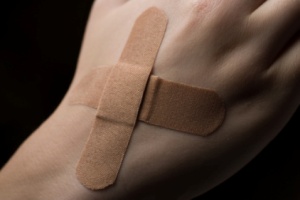 OSHA says that the employer shall ensure that each affected employee uses appropriate hand protection and other protective clothing where there is exposure to hazards such as skin absorption of harmful substances, severe cuts or lacerations, severe abrasions, punctures, chemical burns, thermal burns, harmful temperature extremes, and sharp objects.
OSHA says that the employer shall ensure that each affected employee uses appropriate hand protection and other protective clothing where there is exposure to hazards such as skin absorption of harmful substances, severe cuts or lacerations, severe abrasions, punctures, chemical burns, thermal burns, harmful temperature extremes, and sharp objects.
There are many types of gloves available today to protect against a wide variety of hazards. The nature of the hazard and the operation involved will affect the selection of gloves. The variety of potential occupational hand injuries makes selecting the right pair of gloves challenging. It is essential that employees use gloves specifically designed for the hazards and tasks found in their workplace because gloves designed for one function may not protect against a different function even though they may appear to be an appropriate protective device.
The following are examples of some factors that may influence the selection of protective gloves for a workplace:
- Type of chemicals handled.
- Nature of contact (total immersion, splash, etc.).
- Duration of contact.
- Area requiring protection (hand only, forearm, arm).
- Grip requirements (dry, wet, oily).
- Thermal protection.
- Size and comfort.
- Abrasion/resistance requirements.
Gloves made from a wide variety of materials are designed for many types of workplace hazards. In general, gloves fall into four groups:
- Gloves made of leather, canvas or metal mesh;
- Fabric and coated fabric gloves;
- Chemical- and liquid-resistant gloves;
- Insulating rubber gloves.
SOURCE: www.nonprofitrisk.org



